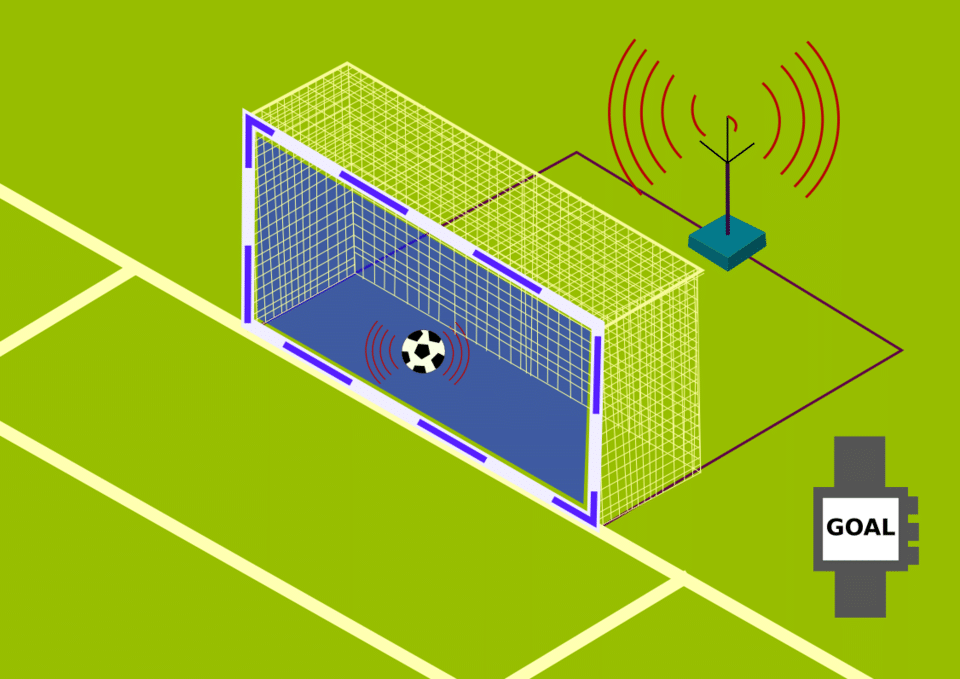Photo by Wikimedia Commons 2.0
With the presence and development of VAR continuing to divide the footballing community, it is easy for fans to forget the advancements made by technology in football.
However, one area of the game that has been an overwhelming success since its implementation has been goal-line technology.
In essence, the technology is simple – it informs referees if the ball has crossed the goal line or not and it has ended countless debates and controversial moments since its inception.
As with most areas of technology and change within the game of football, scepticism was initially present, as fans and those within the game looked to adapt to the innovation.
However, within a relatively short period of time, goal-line technology has become an important part of the global game and its place within the game looks secured for generations to come.
Punters and football betting sites UK are all delighted with the implementation of goal-line technology, with goal controversies now averted but let’s look at the history of goal-line technology in football and how it has impacted the game:
First FIFA World Cup Goal Line Technology Goal – France vs Honduras 2014
While there has been a few trials of the technology in the build up to the 2014 FIFA World Cup, it finally came into practice at a major tournament for the first time in Brazil.
Seen as an innovation to provide clarity to referees, fans and players alike, it came into its own straight away, as France took on Honduras.
To the naked eye, it looked as if Karim Benzema’s strike that hit the post was clawed away superbly by Honduran keeper Noel Valladares, but the technology intervened, and the referee blew for a French goal.
One closer inspection, the ball had indeed crossed the line marginally, despite the best efforts of Valladares and a goal was rightfully awarded to Benzema and France.
First Premier League Goal Line Technology Goal – Edin Dzeko – Manchester City vs Cardiff City – 2014
In advance of the 2013/14 Premier League season, there was plenty of talk about how goal line technology would be used and if it would be successful in England’s top flight.
Edin Dzeko enjoyed some fantastic moments in a Manchester City shirt and he etched his name into the club’s and EPL history even further, by netting the first strike to be confirmed by goal line technology.
City were being made to work hard by Cardiff at the Etihad, before the Bosnian squeezed home. His shot was well cleared by a Bluebirds defender but had clearly crossed the goal line and it helped City on their way to three important points, as they clinched the Premier League title for the second time.
Why was goal-line technology brought into modern football?
As mentioned, the need to cut out human error on something as simple as the ball crossing the goal-line, was the principal reason for goal-line technology being brought into football.
Sports such as rugby, cricket and tennis were streets ahead of football in terms of their technological innovation and output at the start of the 2010’s and the objectivity of the ball crossing the goal-line, felt palatable for football fans.
In addition, there have been multiple controversies over the years in terms of goals that were given when they shouldn’t have been and goals that have been missed by the referee and their officials.
The technology of course comes at a cost to leagues and not every competition or ground worldwide has been able to implement the software, instead choosing to rely on the on-field decisions made by referees.
Subjectivity surrounding the ball crossing the goal-line is also pretty rare, with it being an obvious call on most occasions for match officials, meaning some leagues have not seen the need to bring in goal-line tech.
However, for the leagues that have it, goal-line technology has all-but eliminated human error surrounding goals being awarded and it has become an accepted part of modern day football.
Here is a look at some of the most controversial goal-line moments over the years:
The goals that were…….
England’s 1966 World Cup triumph could have been very different had goal-line technology existed over 60 years ago.
Sir Geoff Hurst’s hat-trick was enough to sink West Germany at Wembley but whether is second (England’s third) on the day crossed the line, has always been subject to plenty of conjecture – not that Hurst or England care too much of course!
Liverpool’s 2005 Champions League win will always be remembered for their Istanbul heroics, but their semi-final win over Chelsea was marred with controversy.
Luis Garcia’s early strike was deemed to have crossed the line at Anfield, despite plenty of opinions to the contrary and Liverpool marched on to the final, where they clinched their fifth UCL crown.
And the goals that weren’t…….
Manchester United had plenty of things go their way in the 2000’s yet they looked to have conceded at home to Tottenham, as Pedro Mendes’s strike was inexplicably dropped into his own net by United keeper Roy Carroll.
However, referee Mark Clattenburg couldn’t definitively say that the ball had crossed the line and United held on to an important point at Old Trafford, with replays showing that a goal should have been given.
England vs Germany at football always serves up drama and in the 2010 FIFA World Cup in South Africa, the two old foes played out another chaotic encounter.
The history books will state that Germany ran out comfortable winners, prevailing 4-1 but at 2-1 things could have been very different, if Frank Lampard’s stunning strike had been given as a goal.
Once again, replays showed that the ball had clearly crossed Manuel Neuer’s line, but the referee waved play on and perhaps Germany gained retribution for the Geoff Hurst goal some 48 years before.
Goal-line technology bee developed for the better and has eliminated these talking points from the game in 2025 and beyond but they will always be part of the social fabric of the game.





